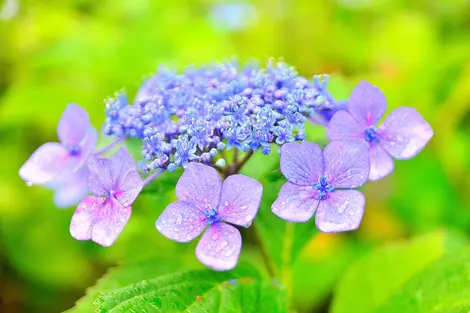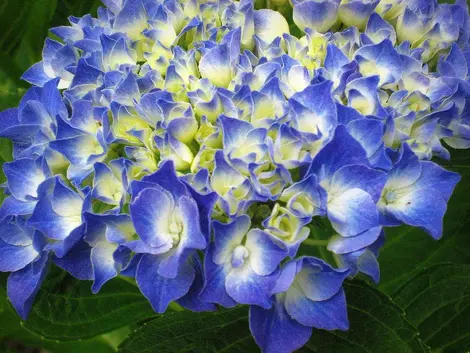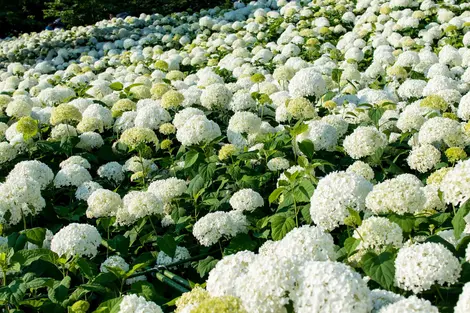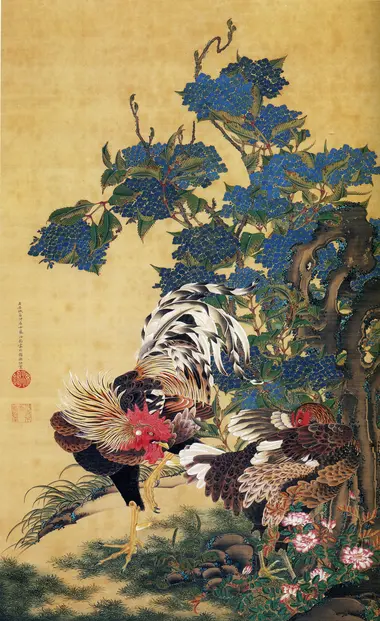Hydrangeas in Japan アジサイ
- Published on : 08/06/2018
- by : M.H.
- Youtube
The flower of the tsuyu
The rainy season marks the beginning of the flowering of hydrangeas in Japan, much-loved and beautiful flowers found throughout the archipelago. The Japanese flock to admire them in the same way as the plum and cherry blossoms. History and tips for enjoying hydrangea season.

The rainy season in Tokyo
Nestor Lacle
A summer air
With the rainy season which begins around the beginning of June , the humidity level explodes and the days of bad weather follow one another. It may discourage you from traveling to Japan or spending your days outside, but grab your umbrella and go take in the sights! Flowers discovered in Japan, hydrangeas ( ajisai in Japanese) are appreciated and celebrated by the locals. The flowering of hydrangeas announces the arrival of summer and it is worth celebrating!
You will find many gardens where you can admire these multicolored flowers. The Japanese are proud of them and do everything possible to showcase them. Dozens of varieties are religiously tended to provide a delightful array for those looking forward to this time of year. Beds of white, blue, green, purple or pink petals... The color is decided and changes with the level of acidity of the soil and the amount of rain that the plant absorbs. A chemical reaction that adds magic to the show.
See also: Top activities to do during the rainy season
The Japanese and the hydrangeas
The Japanese tradition around the contemplation of flowers has been going on since the dawn of time , with hanami . It begins at the end of winter with the plum trees , continues in the spring with the cherry trees before the hydrangeas announce the imminent arrival of summer. Families go to temples or parks to admire these flowers which are the result of the capricious Japanese climate . The more abundant the rains, the more the hydrangeas will be beautiful and flowery.
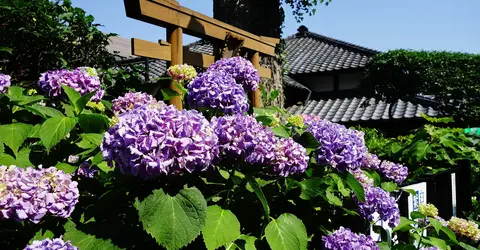
Hydrangeas often grow in the gardens of temples and shrines
Takayuki Miki
Hydrangeas have been celebrated in poetry for more than a millennium , since poems from the Nara period (710-794) have been found that mention these magical flowers. Until the Edo period (1603-1868), samurai even saw them as a symbol of immortality . With their color changing according to climatic conditions, they represent instability in the eyes of the Japanese. But their more beautiful flowering each season is a symbol of eternity and stronger bonds .
The ajisai is declined on the grounds of kimonos, in painting, jewelry and decoration. It has found a very important place in traditional art but also in the daily life of the Japanese.
To go further: Japanese poetry
Where to see them?
Festivals in honor of hydrangeas are organized all over Japan as they bloom, near parks or temples where they grow in abundance. Open-air tea ceremonies , photography or haiku contests are held, local food stalls are set up, and people dance and play musical instruments under a cloud-darkened sky .
Here is a selection of 10 gardens where you can admire hydrangeas in Japan:
- at Meigetsuin Temple, or Ajisaidera in Kamakura
- on the Hakone Tozan Railway (also known as the Hydrangea Train), from Hakone-Yumoto Station in Hakone
- at Hase Temple in Kamakura
- at Mimurotoji Temple in Kyoto
- at Hakusan Jinja Shrine in Tokyo
- at Asukayama Park in Tokyo
- at Shimoda Park in Shizuoka
- at Hondoji Temple in Chiba
- at Ohirasan Jinja Shrine in Tochigi
- at Fujinomori Shrine in Kyoto
To read: Enjoying spring near Tokyo



